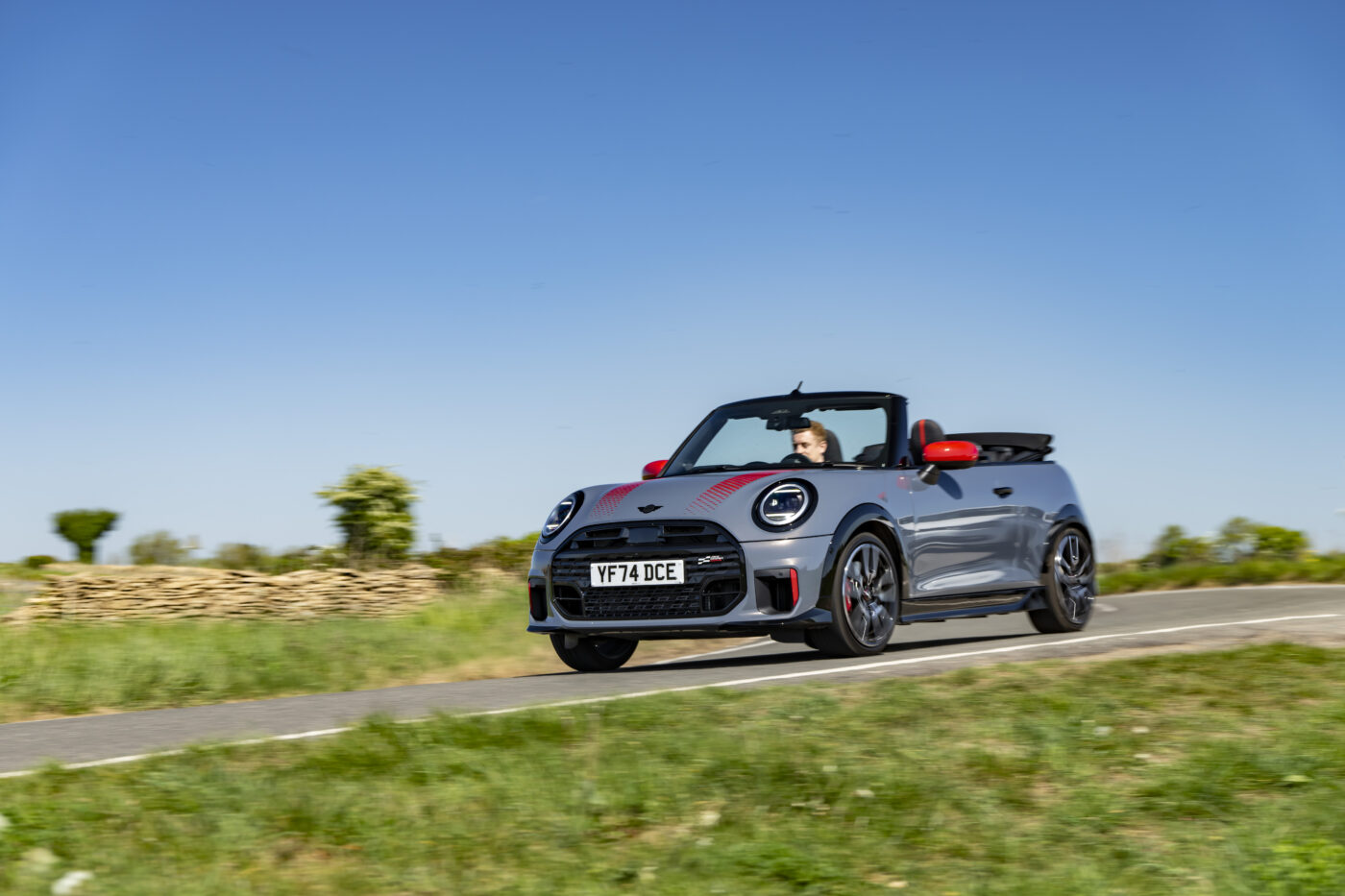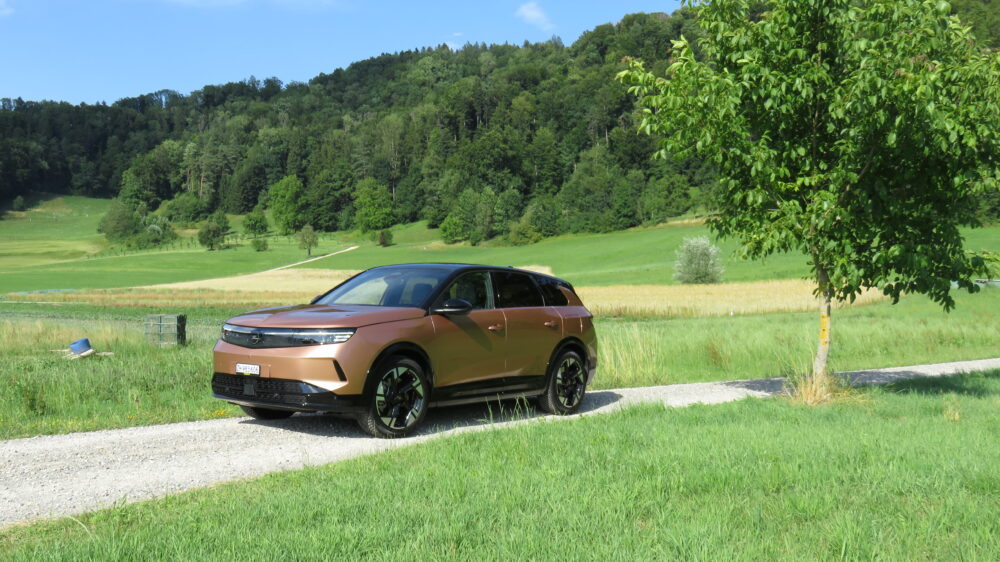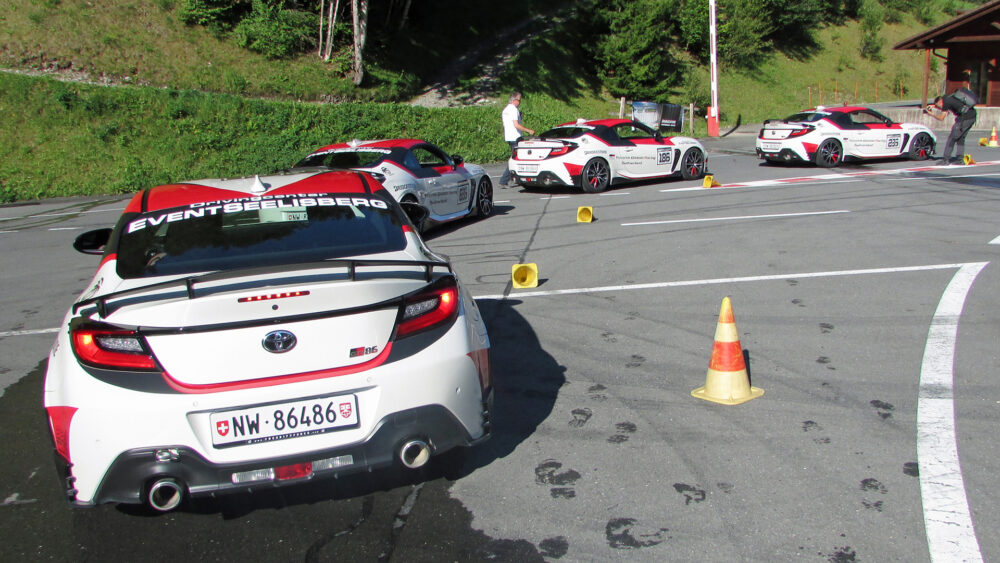Mini: JCW can also be electric
At Mini, John Cooper Works has always stood for cool, riotous and fun cars that crave a little more curves. And that remains the case with electric drive!
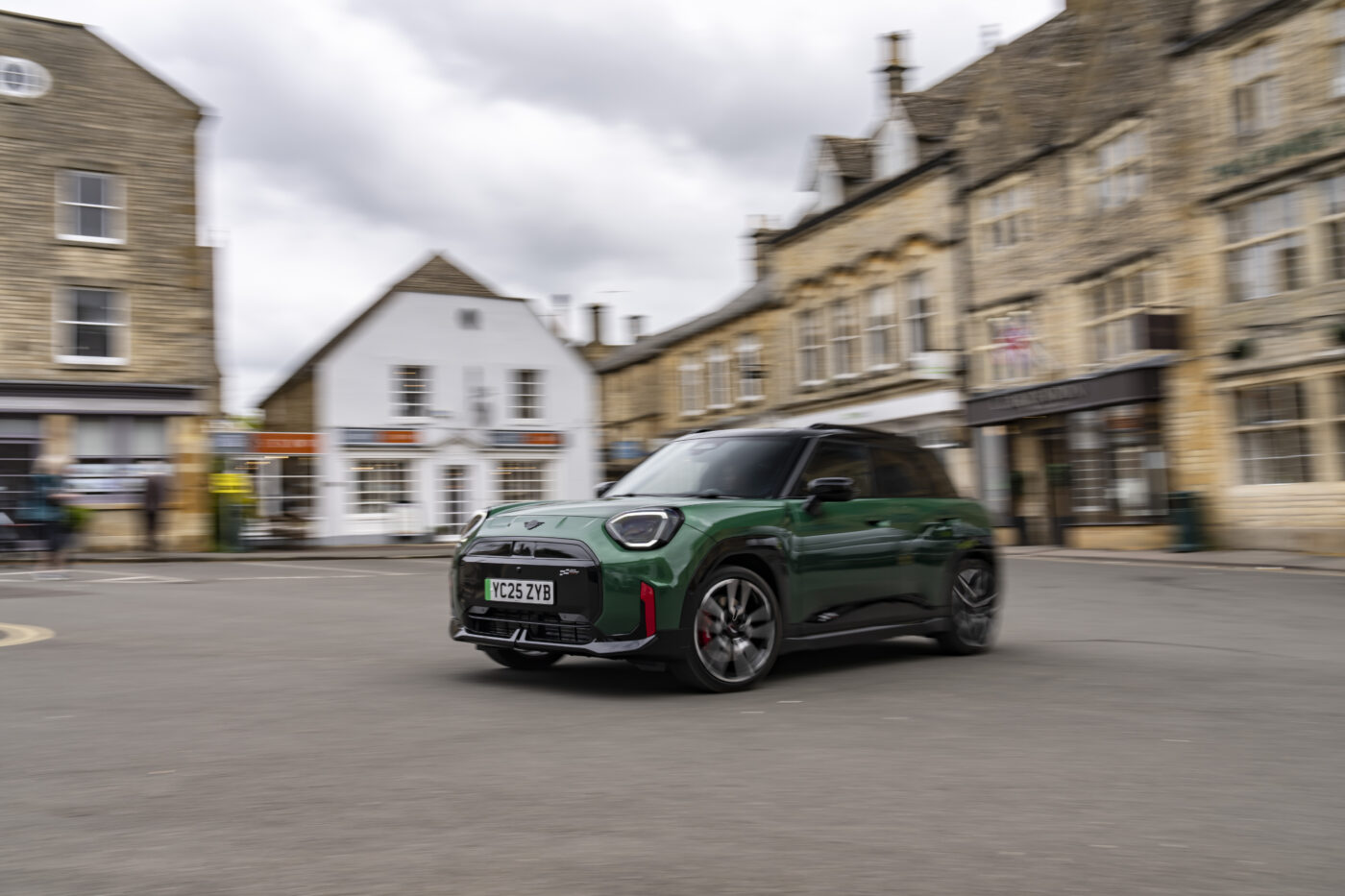
Of course, purists will claim that a real Mini John Cooper Works - or JCW for short - needs a powerful petrol engine under the hood. Which is still the case, but with the three-door Mini Electric and the Aceman, there are now for the first time two electric variants that put a smile on your face even without the combustion engine - which also turns into a broad, satisfied grin from bend to bend. Because the instantaneous power delivery of the electric drive with its 190 kW/258 hp and 350 Nm is a stunner.
 There is actually no temptation to press the red boost button on the steering wheel and call up the additional 20 kW/27 hp of engine power for ten seconds. Even so, the two Brits accelerate very quickly. And if desired, this can also be done with artificial, but never artificial sound - because the digitally generated soundscape is pleasing. Just like the silence when the electric Mini simply storms from 0 to 100 km/h in 5.9 seconds (Aceman: 6.4 seconds).
There is actually no temptation to press the red boost button on the steering wheel and call up the additional 20 kW/27 hp of engine power for ten seconds. Even so, the two Brits accelerate very quickly. And if desired, this can also be done with artificial, but never artificial sound - because the digitally generated soundscape is pleasing. Just like the silence when the electric Mini simply storms from 0 to 100 km/h in 5.9 seconds (Aceman: 6.4 seconds).
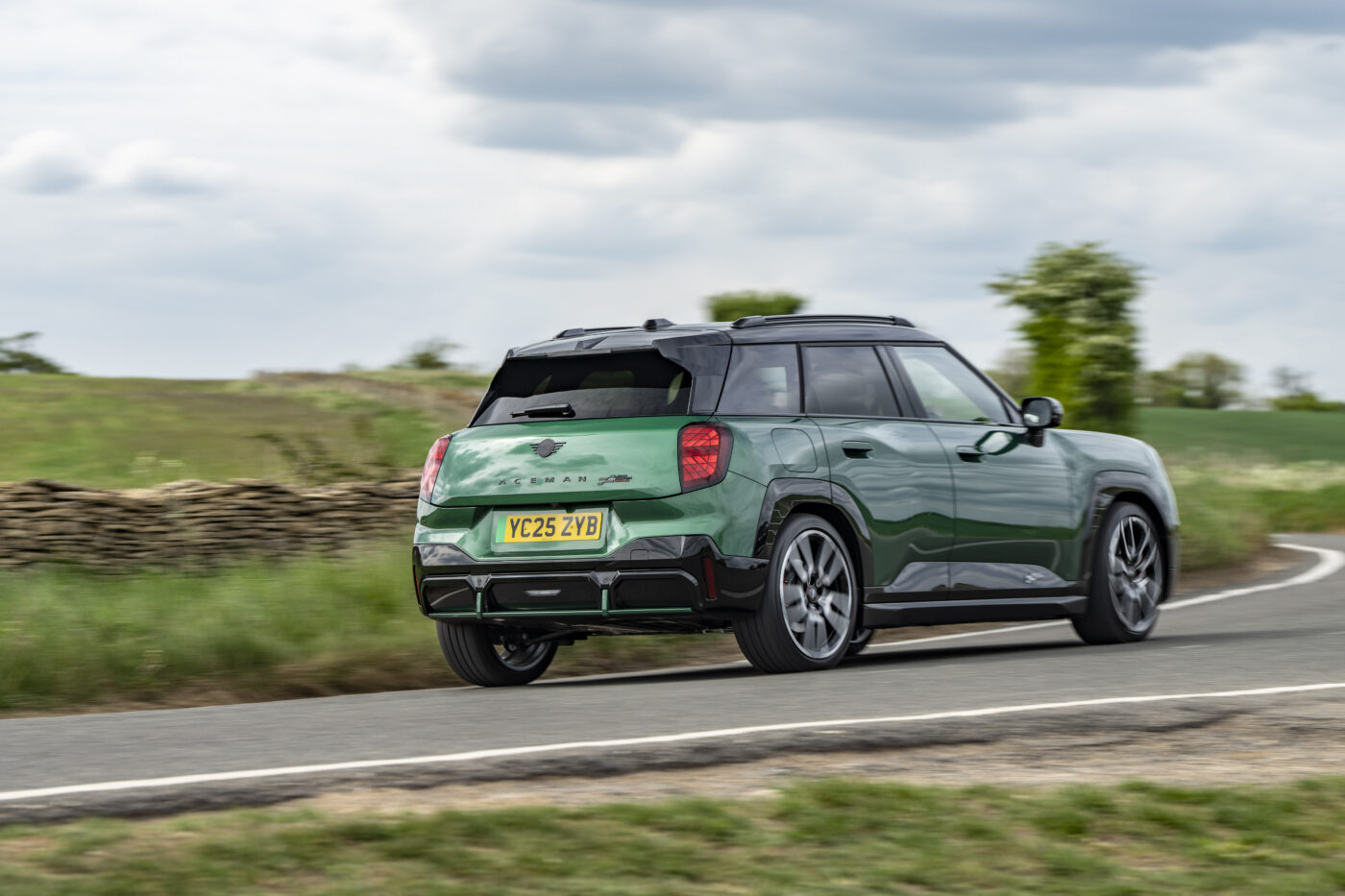 E-dynamics meets go-kart feeling
E-dynamics meets go-kart feeling
Not only the dynamic acceleration, but also the sporty suspension set-up from JCW is just right. On the sometimes uneven, but above all wonderfully winding roads in the hills of the Cotswolds in the southwest of England, the Mini sometimes seems almost a tad too harsh, but shines with excellent road holding and the typical go-kart feeling when steering. Even the larger and heavier Aceman is impressive, but doesn't steer quite as directly as the three-door and remains a little more unsettled despite the adaptive JCW sports suspension. However, this is logical for the clearly more spacious, SUV-like Aceman with 95 kilos more weight and 300 to 1005 liters of luggage space - the Mini JCW has 210 to 800 liters.

Building on motorsport history
The two electric versions of the JCW are somewhat reminiscent of the brand's origins, when British sports car designer John Cooper stirred up the rally scene with his small Minis in the 1960s. New brakes and a more powerful engine turned a cheeky small car with front-wheel drive into a winner at the 1964 Monte Carlo Rally. Patrick Hopkirk had chased the tartan red Mini Cooper S with the starting number 37 over the Col de Turini and through the hinterland of the Côte d'Azur at the legendary rally and won as a blatant outsider. Further victories for Mini in 1965 and 1967 prove that this success was no coincidence, laying the foundation for the passion for racing that can still be felt in every JCW model today - including the electric ones. In the past, as today, people tended to underestimate the little speedsters and were always surprised by the dynamics and potential of the nimble Brits.
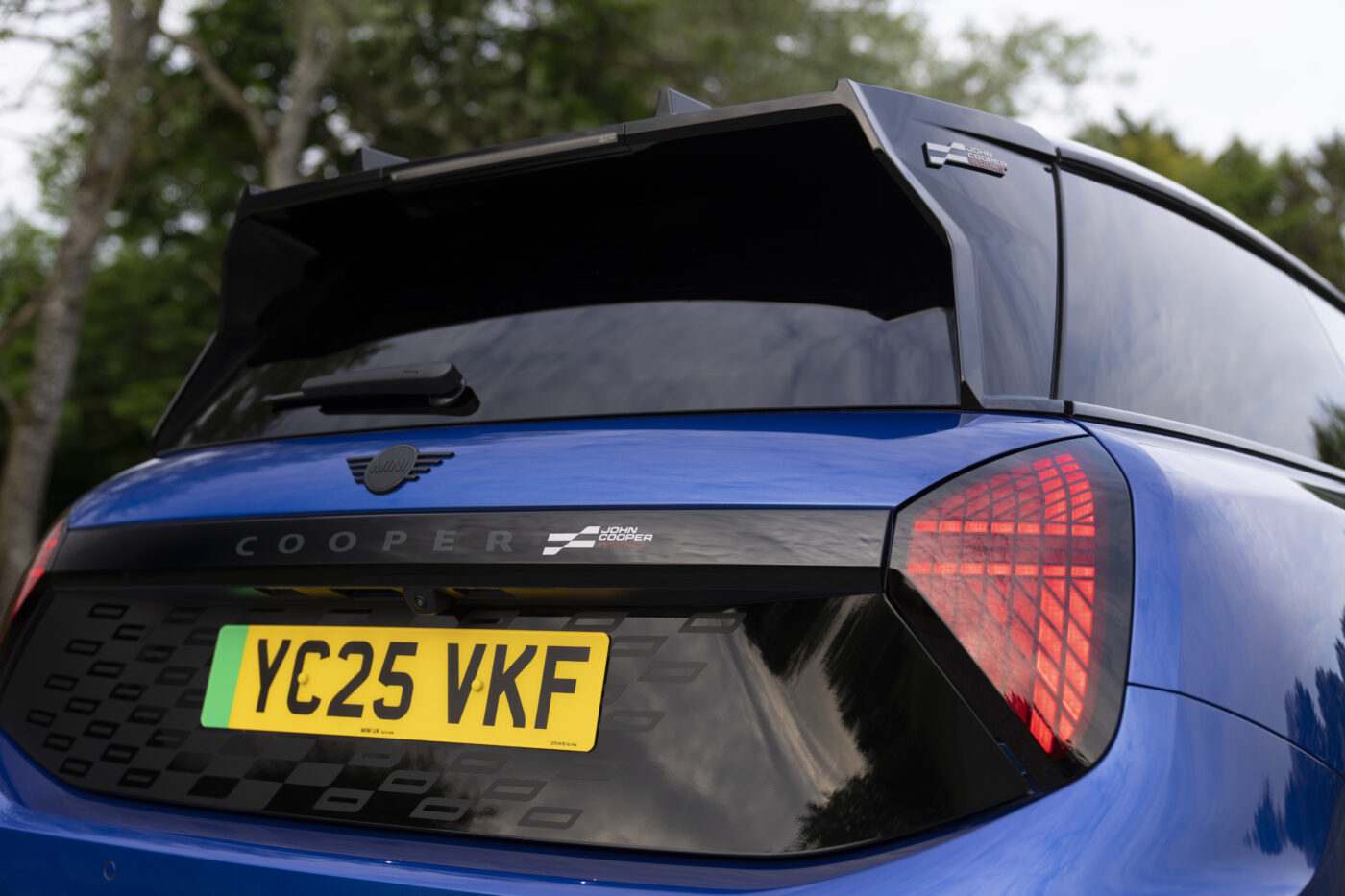 Sporty flair and pretty details
Sporty flair and pretty details
If you want to exploit this potential in the three-door Mini JCW Electric, the 49.2 kWh battery will certainly wave the chequered flag before the 371 km range according to the WLTP (the Aceman has a range of 355 km). However, thanks to a maximum DC charging capacity of 95 kW, any pit stop will not take forever. And both e-models deliver a range of around 100 km within ten minutes with HPC charging. Visually, there are also exclusive equipment details that pick up on the racing history, such as model-specific aeroblades at C-pillar height and eye-catching rear spoilers. In the red and black interior with the knitted surface of the dashboard and the JCW sports seats offering plenty of lateral support, red decorative stitching provides additional accents. And of course there are also such nice gadgets as a special JCW Drive Mode, which also records the G-forces, power output and much more on the large, central pizza display.
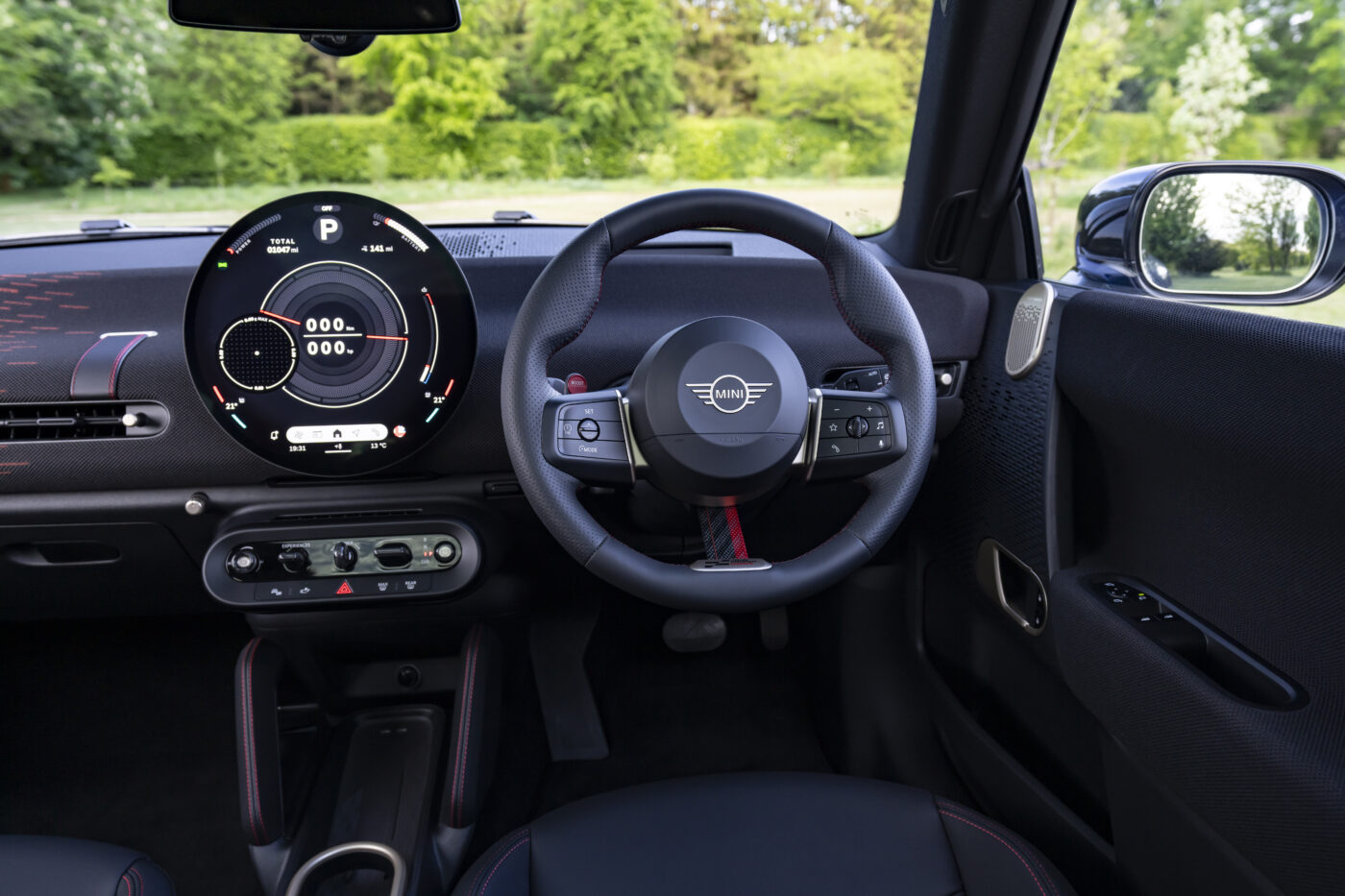 So much sportiness and dynamism come at a price: the three-door electric JCW is available from CHF 46,700, the larger Aceman from CHF 48,400. This makes it easier for Mini JCW fans to enter the electric era, as the two combustion engines, Mini John Cooper Works and Mini John Cooper Works Convertible, which have also been revised but are powered by a conventional 2-liter turbo engine with 170 kW/231 hp and 380 Nm, are even slightly more expensive at 49,700 francs and 52,800 francs respectively. However, as the test on the English country roads showed, they also offer plenty of driving pleasure.
So much sportiness and dynamism come at a price: the three-door electric JCW is available from CHF 46,700, the larger Aceman from CHF 48,400. This makes it easier for Mini JCW fans to enter the electric era, as the two combustion engines, Mini John Cooper Works and Mini John Cooper Works Convertible, which have also been revised but are powered by a conventional 2-liter turbo engine with 170 kW/231 hp and 380 Nm, are even slightly more expensive at 49,700 francs and 52,800 francs respectively. However, as the test on the English country roads showed, they also offer plenty of driving pleasure.
